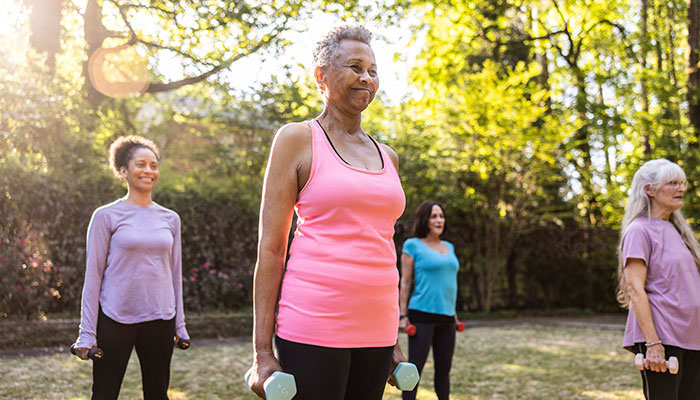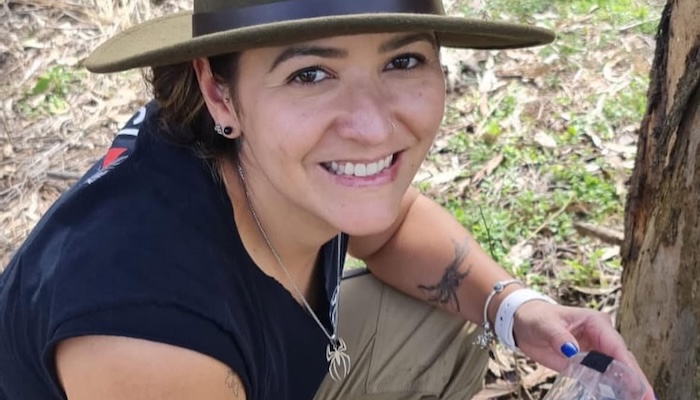Bones are not solid, but rather honeycomb-like structures full of tiny spaces. When bone density is lost, these gaps become bigger, leaving the bone weakened and more likely to break, often from relatively minor accidents. Osteoporosis and osteopenia are both caused by the loss of bone density.

A few simple steps can support bone health: Increase your calcium, eat a healthy diet and exercise regularly.
Osteoporosis is the more serious of the two, putting the patient at severe risk of fractures in the long bones of the legs and arms, as well as hips, pelvis and back. Osteopenia is the precursor of osteoporosis, where bone density is dropping but not yet at a dangerous level.
There are no symptoms of either condition, though fractures or loss of height can be warning signs. The only way to diagnose them is through a bone densitometry test (DEXA), which uses a specialised X-ray machine to assess bones in the spine, legs and hips. These tests produce a result called a T‑score. The normal range is 0 to -1, while T-scores of -1 to -2.4 indicate osteopenia, and -2.5 and below indicate osteoporosis. A person with a T-score in the osteopenia range may still be diagnosed with osteoporosis if they have already had at least one fracture of a long bone.
Diet and exercise are not the only factors contributing to bone density. Smoking and alcohol consumption are risks, as they are for many diseases. Long-term use of some prescription medications can also have a detrimental effect.
Many people think of osteoporosis as a disease of women over 70, and while women are most prone to loss of bone density after menopause, both sexes can be affected as they age. But it is not only a disease of the elderly: even people in their 40s and 50s can be diagnosed with low bone density.
Peak bone mass usually occurs in our mid-to-late twenties, and from that point it deteriorates. Like all the cells in our bodies, bone cells are being constantly recycled and replaced, but as we age, the recycling overtakes the replacement, and we lose more bone than we lay down. Everyone has a different starting point due to their genetic disposition, sex, ethnicity, and exposure to the factors important to bone-building. Vitamins and minerals like calcium and vitamin D are key building blocks for bones, so people who don’t eat dairy or go out in the sun may be deficient. Bone density is related to muscle mass, meaning someone who exercises regularly or works in a job where they perform physical labour has an advantage, while someone who does not exercise or is very thin is at a disadvantage.
But diet and exercise are not the only factors contributing to bone density. Smoking and alcohol consumption are risks, as they are for many diseases. Long-term use of some prescription medications can also have a detrimental effect: corticosteroids for asthma (inhaled and oral), some drugs for seizure prevention, selective serotonin reuptake inhibitors (SSRIs) used to treat depression, and medications for hyperthyroidism are all associated with developing osteoporosis. However, it is important to remember that not taking prescribed medication is likely to present bigger problems than reduced bone density, and these drugs should never be discontinued without medical supervision.

Healthy eating for your bones: Doctors recommend a balanced diet with lots of calcium rich foods and protein.
Hormones have a big role to play in bone health. For women, bone loss accelerates after menopause due to the loss of estrogen, so hormone replacement therapy (HRT) can be an important part of protecting our bones.
While osteopenia does not usually require medication, but there are some prescription medications for osteoporosis that your doctor can discuss with you. Because of the hormone link, your GP may refer you to an endocrinologist to discuss your treatment options.
For most people, treatment recommendations will include the same things we can all do every day to support our bone health: increase your calcium intake through diet or a good-quality supplement, make sure you are getting enough vitamin D (either from the sun or a supplement), eat a healthy diet with enough protein, and exercise regularly.
- Problem screen use hits attention and higher-level thinking: study
- Ramses: golden treasures of the superstar pharaoh come to Sydney
If you are older and/or you have not done a lot of exercise recently, ensure you begin slowly and build up gradually. Choose weightbearing exercise like a 30-minute walk each day, yoga or Pilates to improve your balance, and strength training. Strength training need not mean lifting heavy weights in a gym. It can start off as gentle body weight exercises such as getting up and down from your chair, leg lifts while seated, or lifting a 2-litre bottle of milk. The advice of an exercise physiologist or physiotherapist is often of benefit here to set a program and prevent injury.
While some loss of bone density as we age is inevitable, osteoporosis and fractures do not need to be if we take care of our bone health in the long term.
Dr Veronica Preda is a specialist endocrinologist practising at MQ Health Endocrinology Clinic, the Head of the Endocrinology Department, Associate Professor in the Macquarie University Faculty of Medicine Health and Human Science, and Lead of MD Research at Macquarie Medical School.



